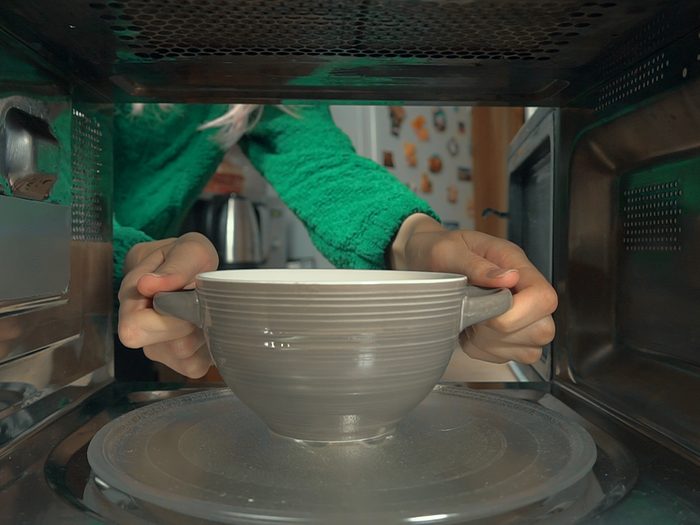
The leftovers you’re better off tossing out
The only thing better than sitting down to a home-made meal is enjoying it again the next day. But even the yummiest leftovers can pose a danger. Keep reading to see how these leftovers can make you sick.
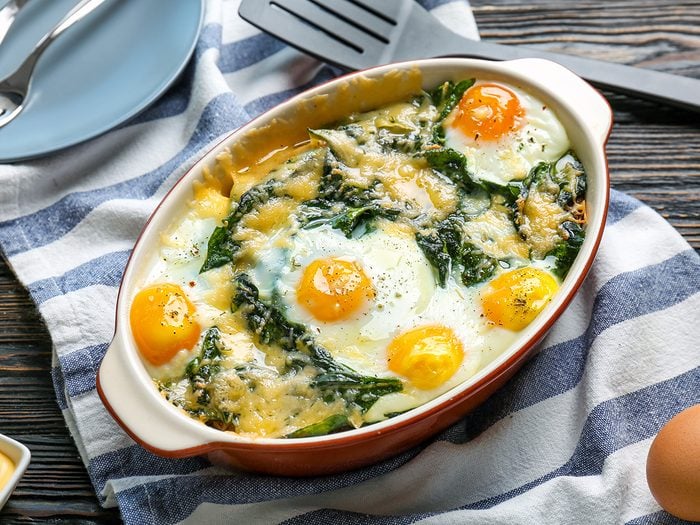
Eggs
“Eggs almost always contain salmonella,” says Kantha Shelke, PhD, a food scientist and principal of Corvus Blue LLC, a food science and research firm. Some methods used to cook eggs require gentle heat for a short duration of time, which may not kill the bacteria. (Any method that results in a runny yolk.) Leaving them at room temperature for any length of time is a recipe for those bacteria to multiply to harmful levels. Plus, eggs always taste better fresh and don’t take too long to scramble, so they’re probably not a food you want to save for later.
Here’s how to buy the best eggs at the grocery store.
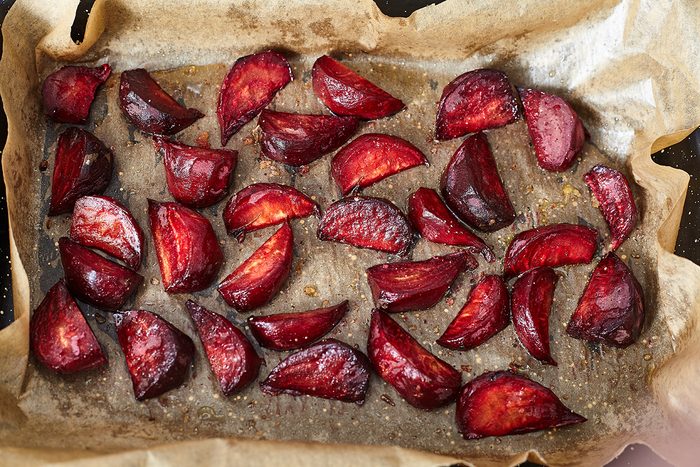
Beets
Research, including a study published in 2012 in Sports Medicine, shows that the nitric oxide in beets can give your workout a boost and may help blood pressure. (Read up on the surprising health benefits of beets.) But those same compounds react with heat badly. When nitrate-rich foods are cooked, “not cooled properly, and further reheated, the nitrates can get converted to nitrites, and then to nitrosamines, some of which are known to be carcinogenic,” Shelke says. So regularly eating reheated beets or beet products may not be a good idea. The same may be true of turnips, another nitrate-rich root veggie.
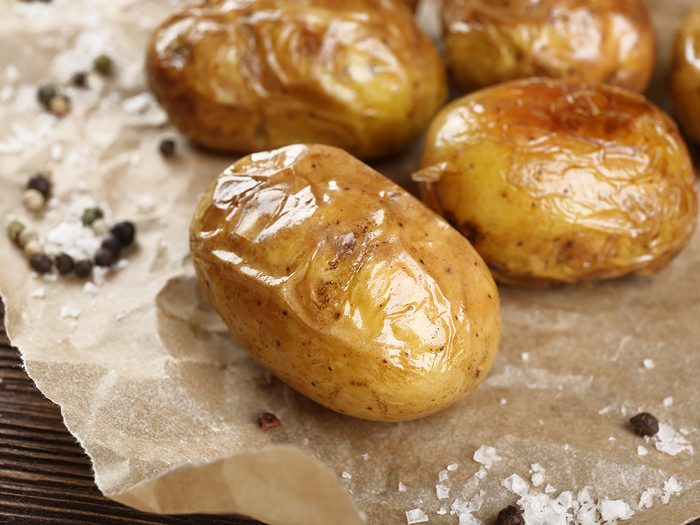
Potatoes
Spuds seem so sturdy, but even though they’re cooked hotter and longer than eggs, they can pose a risk when left to cool and stored at room temperature too long. Doing so can potentially foster the growth of Clostridium botulinum, the bacteria that causes botulism, says Shelke. Large, foil-wrapped baked potatoes are particularly at risk, she says, because they offer bacteria the ideal low-oxygen environment to thrive in. That’s not all: Potatoes are also among the foods that you shouldn’t reheat in a microwave. Zapping them (sans foil of course) for 30 to 60 seconds doesn’t kill the stuff that wreaks havoc on your GI system. Cooking a raw potato in the microwave, however, requires only a few minutes more. Go that route, instead.
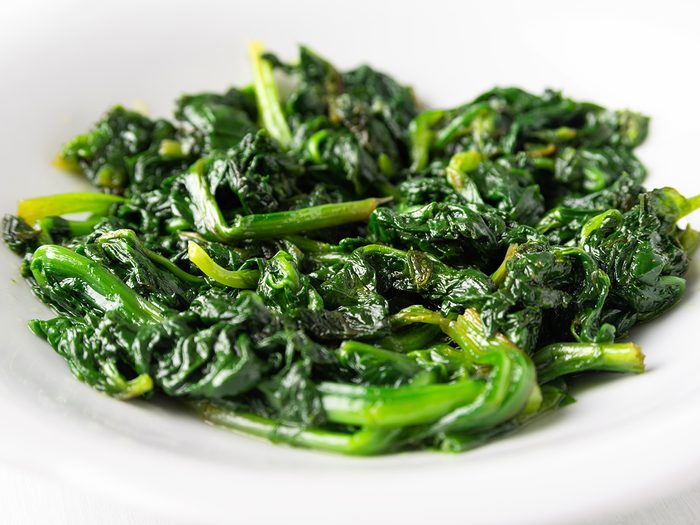
Spinach
Like beets, spinach is another nitrate-rich food that’s often served cooked. To avoid converting nitrates in these leafy greens into potentially carcinogenic nitrosamines, you may want to serve your spinach raw (the ultimate time saver) or lightly sautéed. It’s also important to note that nitrites, another byproduct of heating nitrate-rich foods, are not safe for infants less than six months old, suggests research, including a study published in 2015 in the journal Pediatric Research. Spinach is often mixed with other foods in baby purees, so make sure you aren’t heating them.
Here are more foods you should be eating raw.
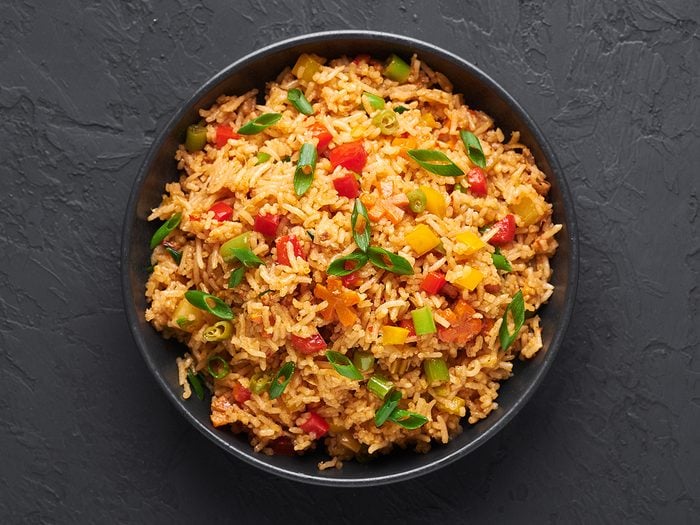
Rice
In the 1970s, a number of food poisoning outbreaks associated with leftover rice led to increased awareness that rice harbours a microorganism called Bacillus cereus that multiplies at room temperature. That doesn’t mean you have to chuck all your uneaten takeout—just make sure you’re stashing it in the fridge quickly. In general, food safety guidelines recommend keeping foods hot (over 60°C) or cold (4°C or under) if you’re not eating it within two hours.
Find out if your fridge is set to the right temperature to keep food safe.

Chicken
Like eggs, raw chicken tends to contain salmonella, and time plus low temps is a recipe for disaster as those bacteria multiply. The best way to avoid this: Make sure the internal temperature of your bird reaches 165 degrees F (75 degrees C). Microwaves don’t always heat evenly or as well as other cooking methods, so be sure to turn the meat. And don’t reheat it more than once—there’s always chicken salad!
Here’s why you should never wash chicken before cooking it.
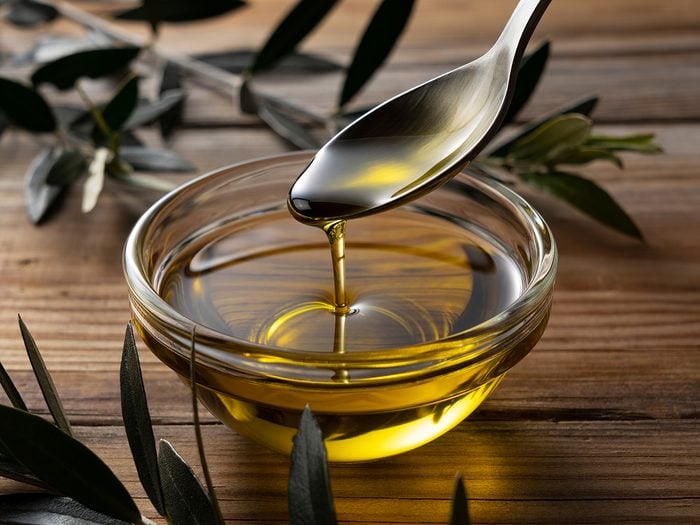
Cold-pressed oils
Flaxseed oil, olive oil, canola oil, and other seed oils are rich in omega-3 fats and other unsaturated fats, which have a number of health benefits. Alas, they are also very sensitive to temperature. “Heating and reheating foods containing these oils can render them unstable and rancid and therefore, not safe,” Shelke says.
These are the healthiest cooking oils, according to dietitians.
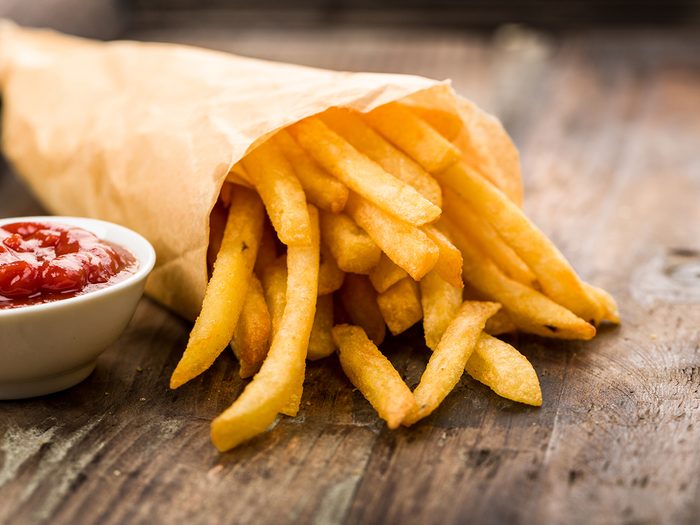
Oily foods
Another reason to avoid reheating oily foods, like French fries? Reheating in, say, the microwave may cause the oil to smoke past its safe level. When that happens it can produce hazardous fumes that are harmful to your health, suggests research, including a study published in 2012 in Food Chemistry. If you’re going to reheat it, do so in the oven at a low temperature—or not at all.
Here’s why you should never wrap your leftovers in aluminum foil.
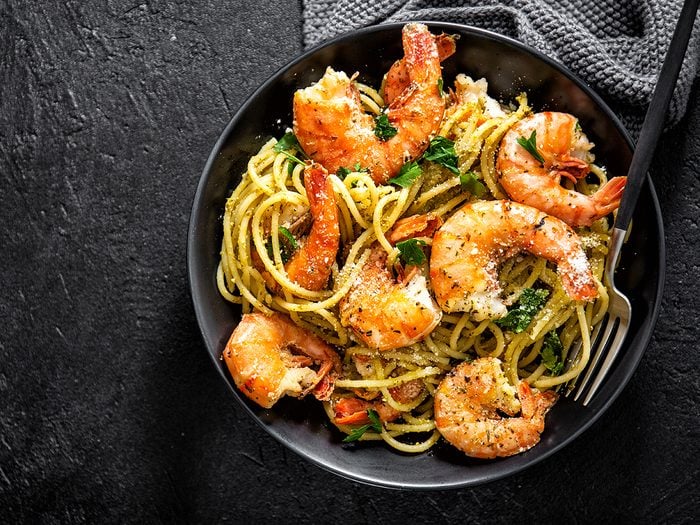
Seafood
Fresh fish is mega-healthy and most of us don’t eat enough. But nothing says “food poisoning risk” like bad seafood. And fish can go bad pretty easily. According to the Food and Drug Administration, bacteria that can cause illness grow quickly at warm temperatures (between 4°C and 60°C). Even the ambient temperature in the room can affect it. To play it safe, never leave seafood out of the fridge for more than two hours (or for more than an hour when temperatures are above 32°C).
Next, check out the expiration dates you should never ignore.